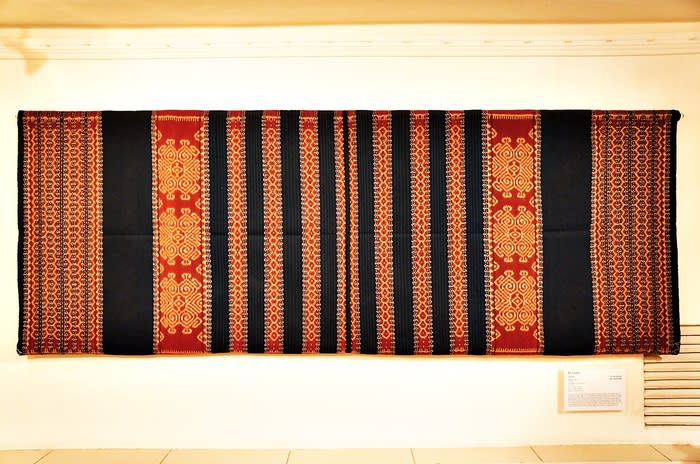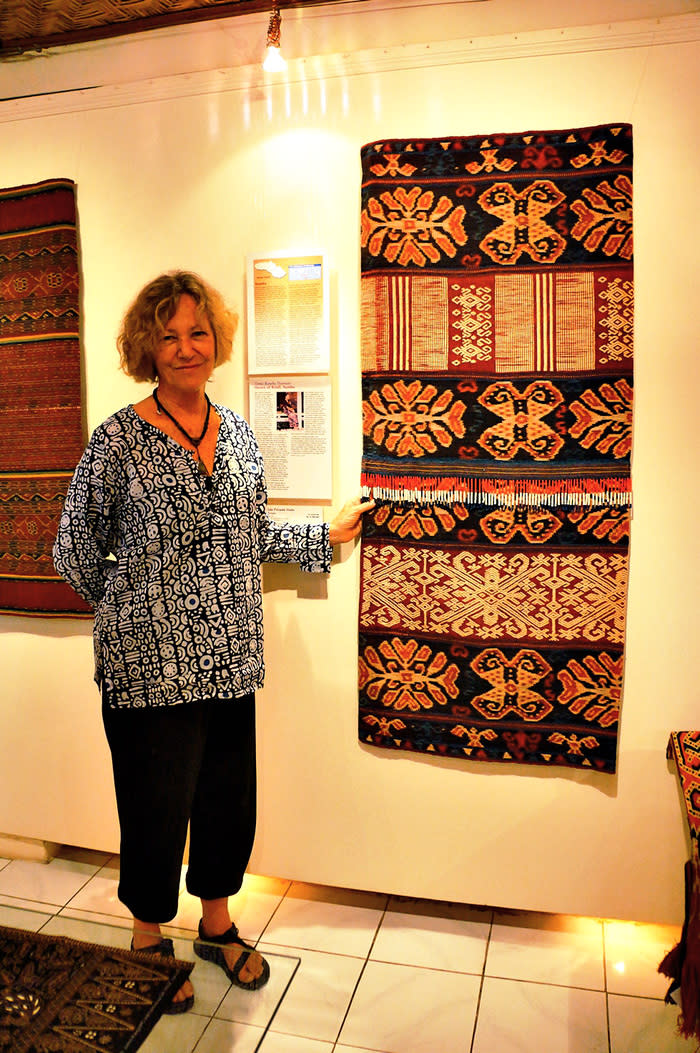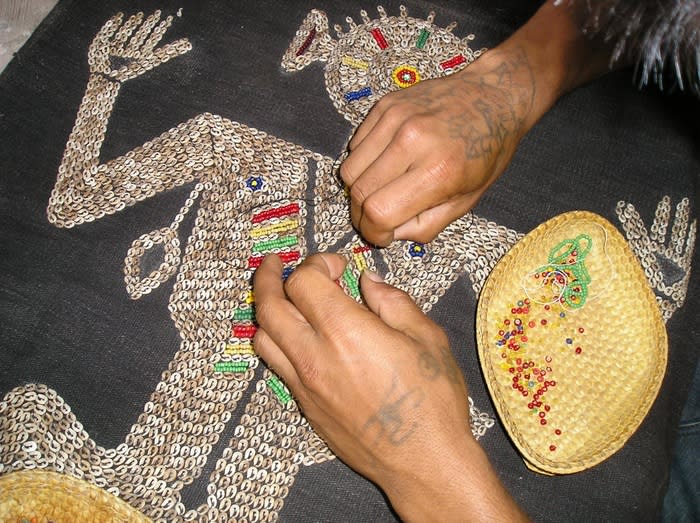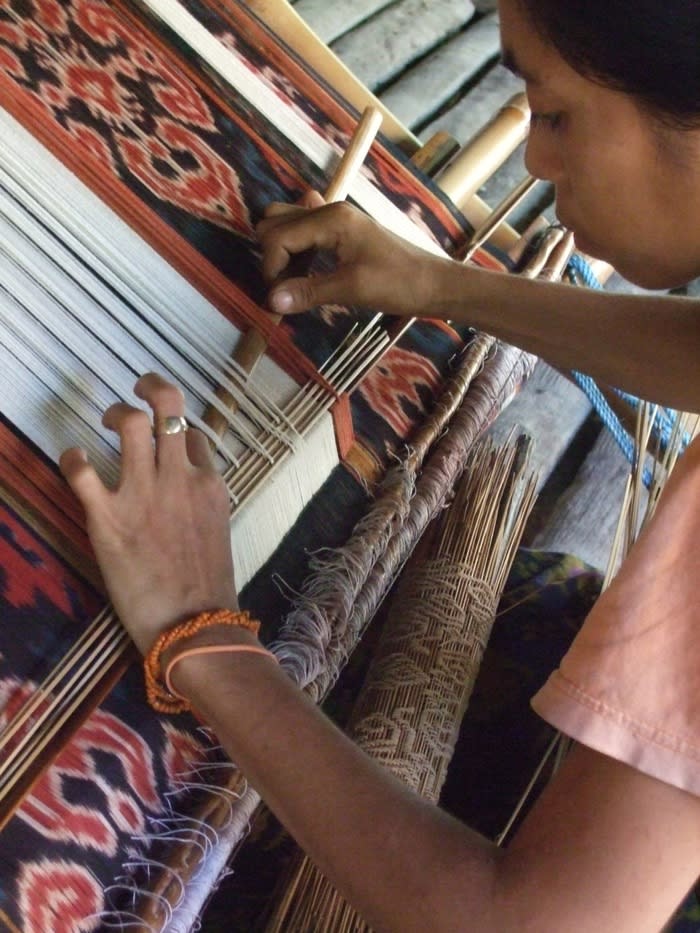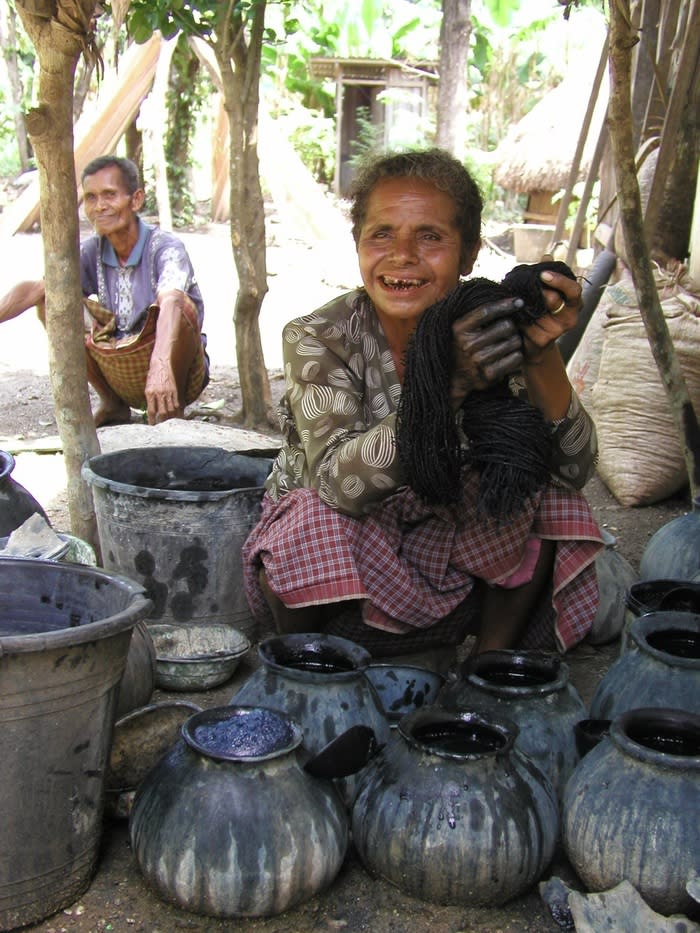Revitalizing Indonesia’s woven heritage
As Jean Howe sat down with The Jakarta Post Travel at the Threads of Life store on Jl. Kajeng in Ubud, Bali, she recalled the story of her travels to the eastern islands of Indonesia in the 1990s, when she uncovered the amazing world of the country's traditional textile manufacturing. This experience would become the foundation of her current business venture.
“We started from Bali and then flew to Sumbawa. [From there] we continued by boat to Komodo, Flores, Lembata and Alor – we were cultural escorts back then. It was at that time that we saw many weavers, who mostly live in low coast area, which relates to having access to dye plants, which grow in low ground places,” said Howe.
The archipelago is blessed with an abundance of dye plants necessary for creating naturally colored fabric. Many locals still color and weave fabric manually using traditional methods.
Although these methods are time consuming, the textiles produced often fetch high prices in the market. Unfortunately, weavers are usually exploited by middle men and receive only a fraction of what they deserve for their work.
Threads of Life – founded by William Ingram, Jean Howe and I Made Maduarta – is in the traditional textiles business to see that Indonesian weavers produce high quality work for which they are appropriately compensated.
Amid the 1998 financial crisis that buffeted the country’s economy, Howe discovered old textiles being sold to tourists on Lembata Island in East Nusa Tenggara. The textiles were of a quality she had never encountered before.
“I can understand their economic needs [that forced them to sell the old pieces of textiles], but the concern is about how it is going to be replaced,” said Howe.
She learned that given the economic situation it would be impossible to create such high quality naturally dyed textiles anymore. One piece can take a year to produce, and none of the weavers could afford to make it their full-time job.
Howe, along with her husband Ingram and Made Maduarta, thought that since they were paid in US dollars maybe they could commission the weavers to create the textiles as a full-time job. The trio hired 12 weavers from Lembata in 1998, marking the beginning of Threads of Life.
When the team returned to Lembata a year later, however, they realized they had a problem. The newer generation of weavers only had experience working on partially finished textiles stored in attics by mothers and grandmothers. But when the weavers were commissioned by Howe’s team to make pieces from scratch, the results were lackluster.
“To be honest, what they produced was very poor quality,” said Howe. “The reason for this is that they never learned the method from their mothers. They were just using the stock left behind. So, we helped them improve.”
Howe did notice that the ikat (fabric-tying process) had been nicely done. It was the color that was lacking.
To improve the quality of the enterprise, the team enrolled more weavers from other islands. In 2001, Threads of Life was working with 50 to 60 weavers. Today, there are 1,400 weavers from all over Indonesia.
Threads of Life strengthens traditional weaver communities, funded by grants and the store that they set up in Ubud.
In 2005 it held the first Indonesian Indigenous Weavers’ Festival in Lembata, involving 96 traditional weavers and community leaders from all around the country.
During the festival, the participants were placed in workshops to exchange knowledge on producing high quality textiles. Demonstrations were performed, such as on how to create vibrant dyes.
Threads of Life regularly contributes to research relating to traditional textiles. They collaborate with the Royal Botanical Gardens in Kew, London, to determine which chemicals in dye plants produce the best hues. Howe said that, in natural coloring method, their research stated that the best red color is produced by plants with high aluminum concentrate.
The research, in turns, made possible for a more efficient production method. For example, Howe said that since discovering the best red color was produced by plants with a high concentration of aluminum, the weavers were able to reduce the number of times they dyed a fabric red from 32 to 12.
Despite breakthroughs, Threads of Life faces various challenges. It can be difficult convincing a local community of the economic viability of traditional textile production, and sustainability remains an issue.
“We work very closely with the weavers. They set the price for their product, but we are also transparent with them on how much it costs us to market the product,” said Howe.
So far, this transparency has paid off and made the venture a success for both the stakeholders and the weavers, who according to Howe are able to live adequately. “They can send their children to university and, at times, they were one of the first to acquire television in their village.”
Though Threads of Life may have tinkered with the production process, the weavers have always been encouraged to stay true to their roots and use the patterns and designs that have existed since the time of their ancestors.
Old patterns, Howe explained, hold extra value as they tell stories about the origin of a community. If these weavers were to abandon those designs for the new and fashionable, they would lose both competitive advantage and historical identity.
Read also:




